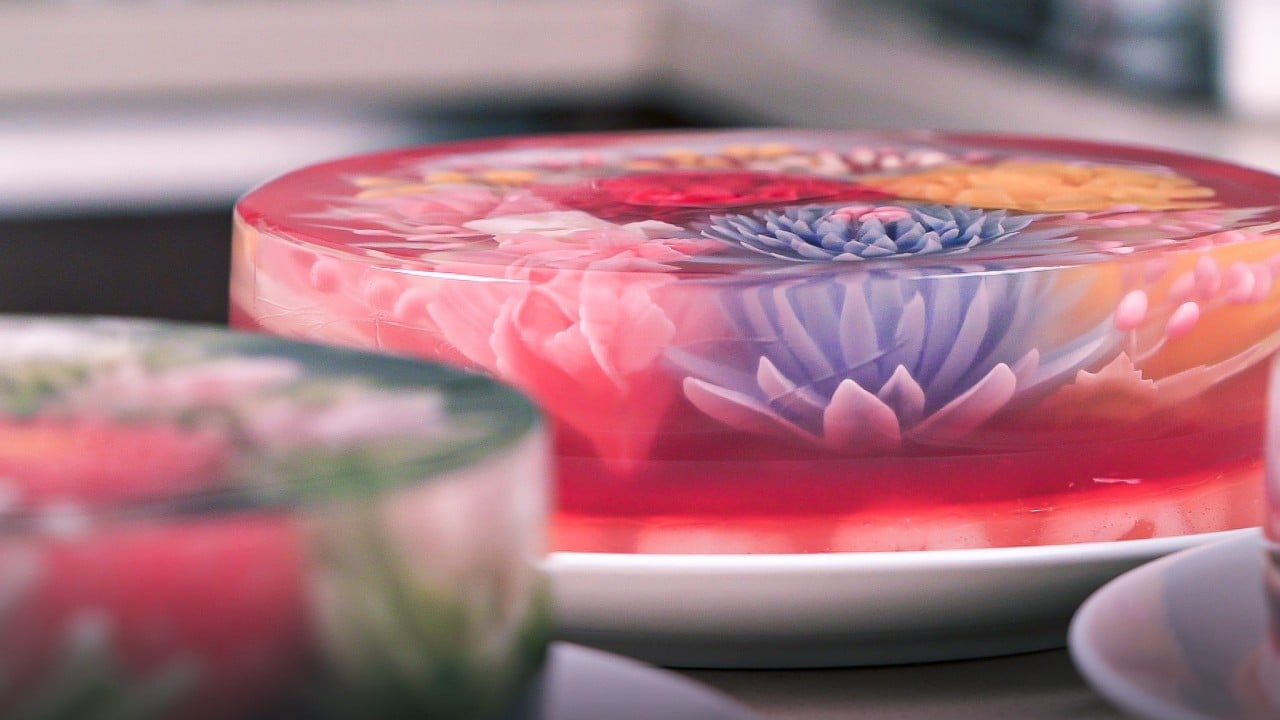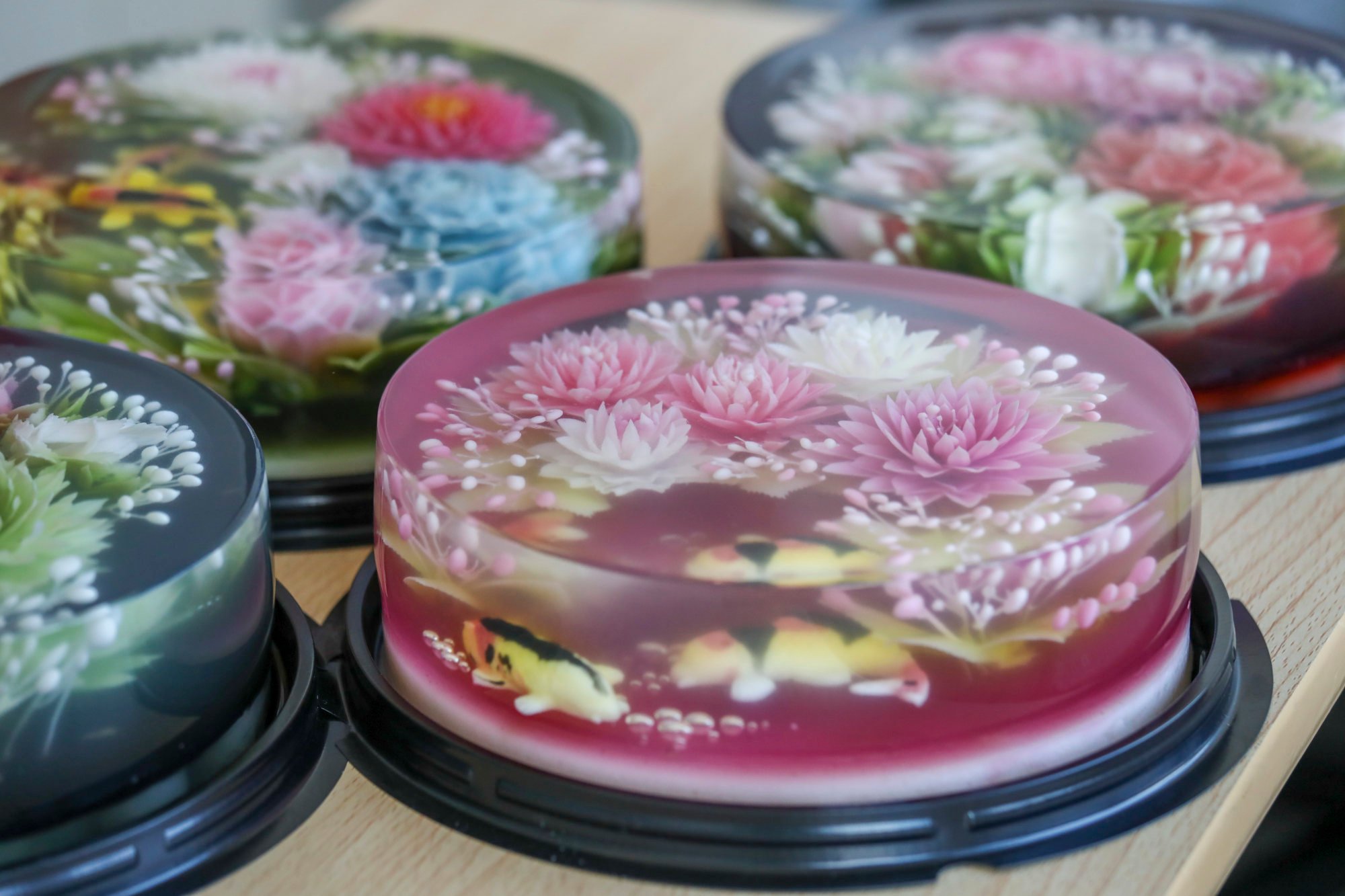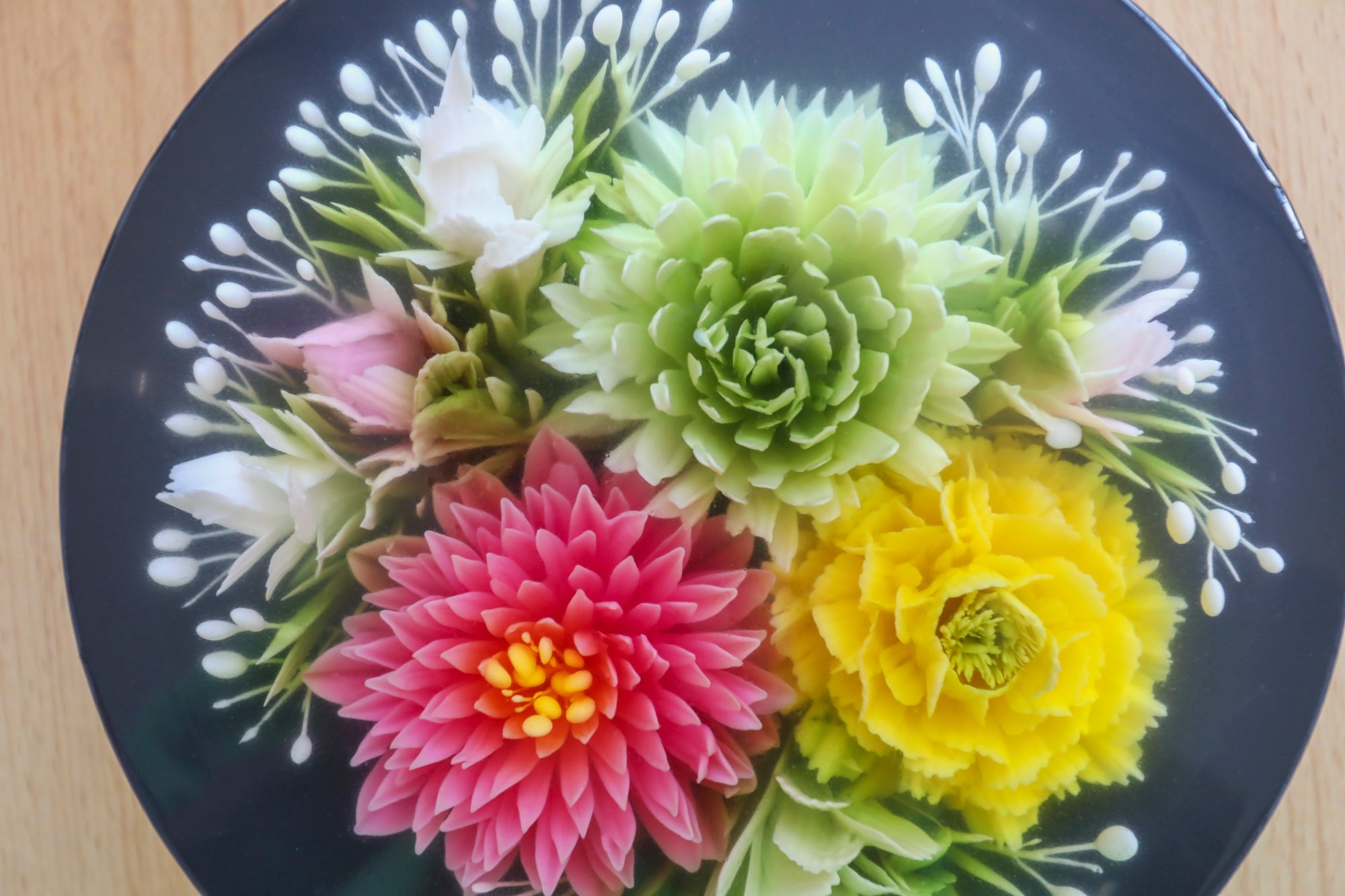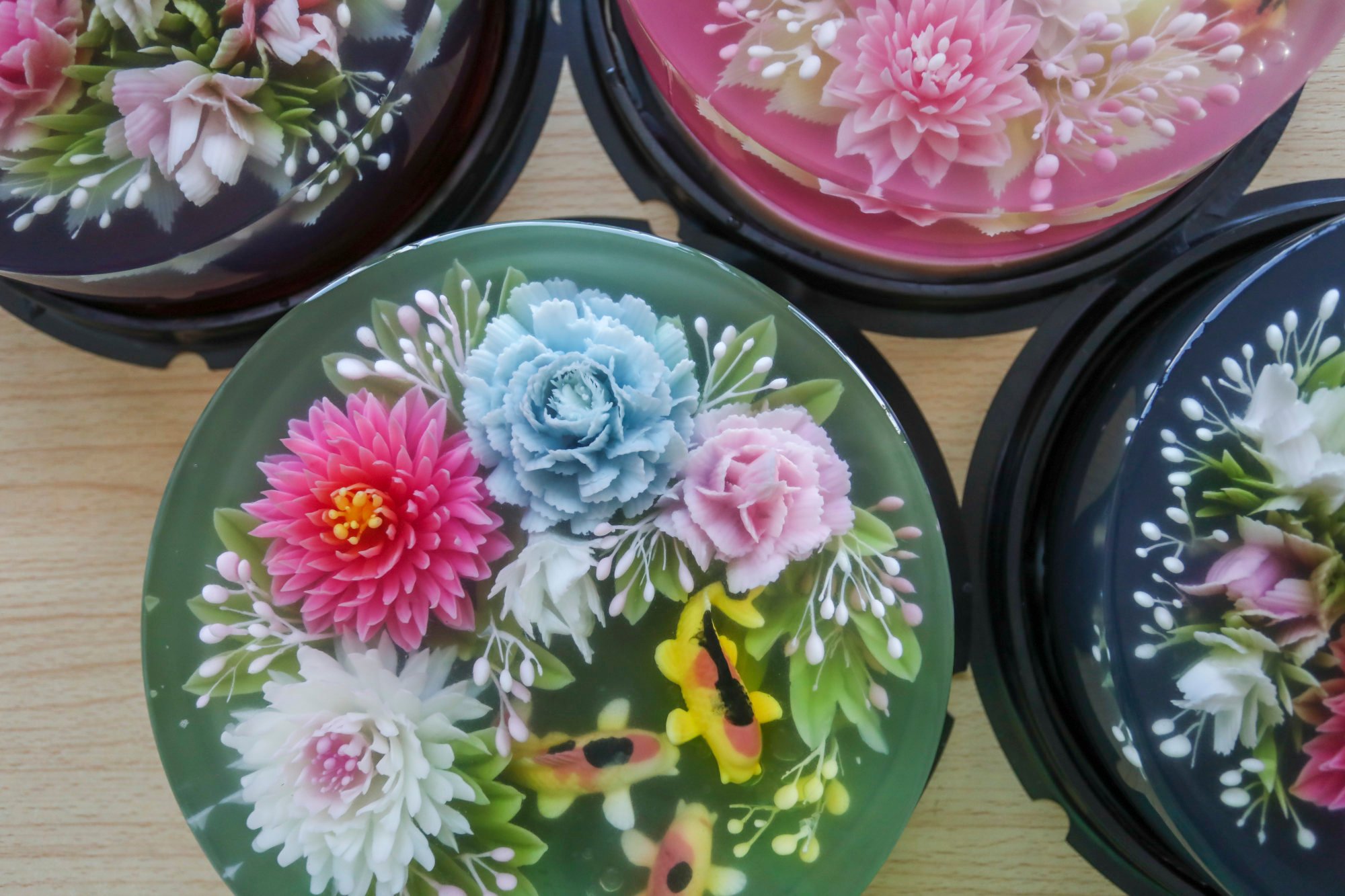
04:33
Crafting floral jelly cakes with former Malaysian architect turned 3D dessert artist
Jelly cake enthusiast creates incredibly lifelike flower decorations and spreads the word in Hong Kong about the craft, popular in her native Malaysia and Singapore
- Siamy Tan only recently got into jelly cake making, popular in Southeast Asia, but her edible designs were a hit on Instagram and she’s started holding classes
- Using a modified hypodermic needle she sculpts in jelly flowers so lifelike they look real. Her secret to success? ‘Practice, practice, practice,’ Tan says
A lot of Instagram bakers are easily impressed when they make a pretty cupcake, but Siamy Tan is taking dessert design to another level.
Malaysian-born Tan is personally reviving the lost art of decorating jelly cakes – cakes where coloured agents are injected into a clear layer of jelly and sculpted into an edible design.
From colourful flowers and petals to koi fish, the possibilities in her three-dimensional canvas of translucent gelatin are endless.
According to her, the trick is to master the art of “jelly jabs”, Tan’s own term for the process of shaping designs into clear jelly with a modified hypodermic needle.
It was very tough to start. At first, I was making two to three cakes every day and running out of fridge space. Everybody was complaining
“People there already know about this type of cake. But in Hong Kong, I’ve had people actually ask ‘can they be eaten? Are these real flowers?’

“You just need somebody to show you and give you the confidence to start jabbing. The rest of it is practice, practice, practice.”
How to make profiteroles with a Southeast Asian twist
“By the end of the first class I knew I was going to do a second class, and I bought all the tools and just kept practising. It’s actually very therapeutic if it’s just you jabbing the jelly cake.
“It was very tough to start. At first, I was making two to three cakes every day and running out of fridge space. Everybody was complaining. We couldn’t eat them all. So many just had to be thrown away.”

“Since I’m going to be here for at least two months [before going back to Malaysia], I thought I can keep myself busy. I never thought there’ll be so many people interested,” Tan says.
“I thought I would do three or four classes. I’m flying again at the start of August – It will be about 15 classes that I will have done, and each class has five to six people.”

She says that mastering needle carving and injecting is not the most difficult challenge. It is the preparation process to ensure the jelly doesn’t dry out, to know when to start jabbing before the cake gets too set, as well as how to create flavours in the jelly.
“We went through many trial and error processes,” Tan explains. “The mastery is in the journey, in learning to fall in love with the process. You can make the jelly sweeter, or not as sweet. Some people put in pandan leaves, so the jelly canvas has more flavour.
How box cake mixes kick-started this pastry chef’s career
“You can use sugar substitutes, but you just have to be careful not to taint the transparency. For example, I may add lychee essence but you have to add it at the right time or it clouds.”
When Tan returns to Hong Kong later in the year, she expects to have mastered even more techniques and skills, and she plans to pass them on to even more students.
“In the flower tool package, there are about 60 different flower blades. At the moment I’ve just gone through less than 10. Maybe I’ll try doing a needlework peacock next. I want to learn the next level and teach that as well.
“I’m not sure where this all will lead, but we’ll just go through the next door when it comes. But whatever it is, I just want to do an excellent job.”

